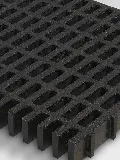loading...
- No. 9, Xingyuan South Street, Dongwaihuan Road, Zaoqiang County, Hengshui, Hebei, China
- admin@zjcomposites.com
- +86 15097380338
- Welcome to visit our website!
reinforced concrete with frp bars mechanics and design
Reinforced Concrete with FRP Bars Mechanics and Design
Reinforced concrete has long been a cornerstone of modern construction, effectively combining the compressive strength of concrete with the tensile strength of steel reinforcement. However, the use of traditional steel reinforcement also introduces challenges, such as susceptibility to corrosion and limitations in certain applications. Fiber Reinforced Polymer (FRP) bars have emerged as a viable alternative, providing numerous advantages in both mechanics and design.
Reinforced Concrete with FRP Bars Mechanics and Design
In terms of mechanics, the behavior of concrete reinforced with FRP bars differs from that of traditional steel-reinforced concrete. FRP bars have a lower modulus of elasticity compared to steel, which leads to a different deformation behavior under load. Consequently, engineers must consider this factor during design to ensure the structural integrity of the element. The bond between FRP bars and the concrete is also crucial; the effectiveness of the reinforcement largely depends on the bond strength, which can be affected by the surface texture of the FRP bars and the quality of the concrete mix.
reinforced concrete with frp bars mechanics and design

Designing structures with FRP bars requires adherence to specific guidelines that account for their unique properties. The American Concrete Institute (ACI) and other governing bodies provide recommendations for the design of FRP-reinforced concrete structures. These guidelines emphasize the importance of considering the bond characteristics, the load-deflection behavior, and the overall ductility of the structure to prevent sudden failures. In regions where seismic activity is a concern, the ductility of the structure must be particularly scrutinized, as FRP materials exhibit different behavior under cyclic loading conditions.
Despite the advantages, the use of FRP bars is not without challenges. Their higher initial cost compared to steel reinforcement can be a limiting factor, making it essential for engineers to perform a cost-benefit analysis. Furthermore, the lack of extensive historical data on long-term performance and behavior under real-world conditions poses challenges for broader acceptance within the construction industry.
In conclusion, the integration of FRP bars into reinforced concrete systems presents a promising evolution in construction technology. By leveraging their unique mechanical properties and corrosion resistance, engineers can design more durable and sustainable structures. Continued research and development will be vital in overcoming current challenges and enhancing the understanding of the long-term performance of FRP-reinforced concrete, ultimately leading to its wider adoption in civil engineering applications. As technology advances and awareness grows, the potential for FRP materials to reshape the landscape of construction becomes increasingly apparent.
-
Transform Your Spaces with FRP Grating SolutionsNewsNov.04,2024
-
The Versatility and Strength of FRP RodsNewsNov.04,2024
-
The Excellence of Fiberglass Water TanksNewsNov.04,2024
-
The Benefits of FRP Grating for Your ProjectsNewsNov.04,2024
-
Elevate Your Efficiency with FRP Pressure VesselsNewsNov.04,2024
-
Welcome to the World of FRP Pressure VesselsNewsOct.12,2024
-
Unveiling the Future of Filtration: Why FRP Filter Vessels are a Game ChangerNewsOct.12,2024
